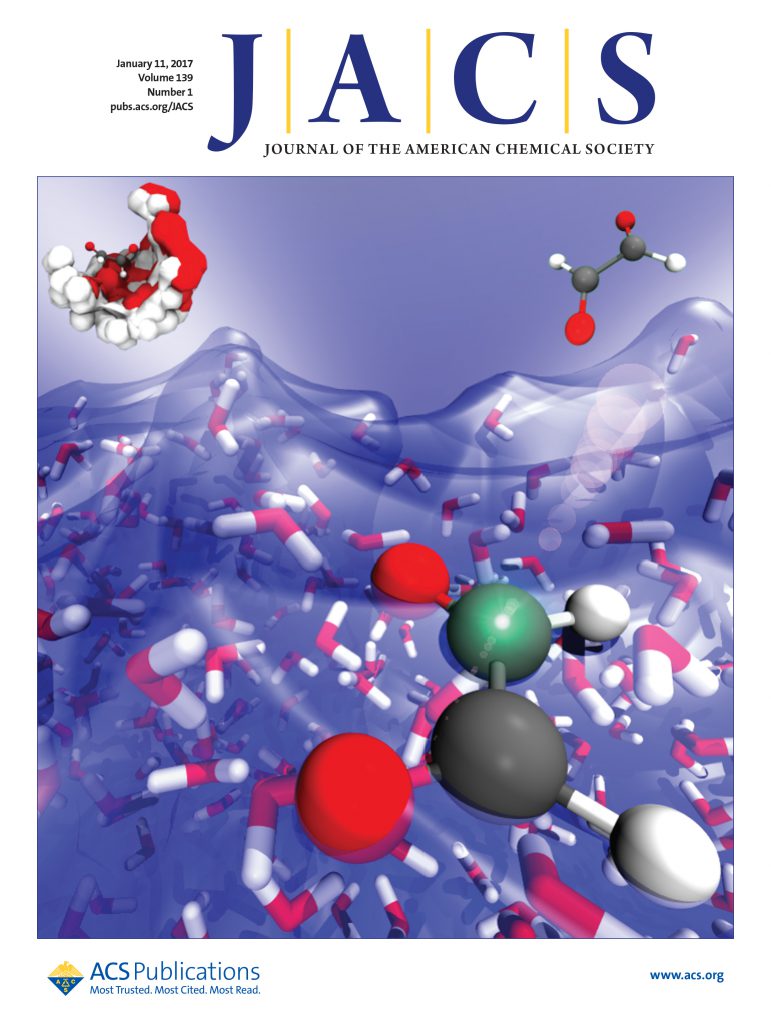Insight into the Catalytic Nature of Lithiophilicity for High-Energy-Density Lithium Metal Batteries
IF 14.4
1区 化学
Q1 CHEMISTRY, MULTIDISCIPLINARY
引用次数: 0
Abstract
Designing dendrite-free lithium (Li) metal anodes for high-performance batteries requires a fundamental understanding of the substrate’s lithiophilicity. Here, we systematically explore the electrochemical nucleation behavior of Li on various transition-metal substrates and uncover a substrate-dependent nucleation barrier that follows an inverted volcano-shaped curve, determined by the d-band center (εd) of these metals. Density functional theory calculations reveal that an optimal εd balances Li-atom adsorption and migration during Li nucleation, minimizing the nucleation barrier. To this end, we propose and validate the catalytic nature of lithiophilicity across diverse transition metal compounds. As a proof-of-concept, we modulate the electronic structure of CoP by incorporating Ni2P, which downshifts the εd of CoP through electron redistribution at the CoP/Ni2P heterointerface, thereby optimizing Li-atom adsorption and migration for enhanced lithiophilicity. This leads to the well-designed CoP/Ni2P heterointerface-rich framework that enables selective bottom nucleation and effectively suppresses dendrite formation. The resulting framework demonstrates exceptional cycling stability, achieving 99.1% Coulombic efficiency over 450 cycles and 90.2% capacity retention after 100 cycles in a Li||LiFePO4 pouch cell. This work revolutionizes our understanding of the catalytic nature of lithiophilicity and offers a pioneering approach for designing next-generation anodes for high-energy-density Li metal batteries.

高能量密度锂金属电池亲锂性催化性质研究
要为高性能电池设计无枝晶的锂(Li)金属阳极,就必须从根本上了解基底的亲锂性。在此,我们系统地探讨了锂在各种过渡金属基底上的电化学成核行为,并发现了与基底有关的成核障碍,该障碍呈倒火山状曲线,由这些金属的 d 带中心(εd)决定。密度泛函理论计算表明,最佳的 εd 可以平衡锂原子在锂成核过程中的吸附和迁移,使成核障碍最小化。为此,我们提出并验证了不同过渡金属化合物亲锂性的催化性质。作为概念验证,我们通过加入 Ni2P 来调节 CoP 的电子结构,通过 CoP/Ni2P 异质界面的电子再分布来降低 CoP 的εd,从而优化锂原子的吸附和迁移,增强亲锂性。这就产生了精心设计的富含 CoP/Ni2P 异质界面的框架,它能实现选择性底部成核并有效抑制枝晶的形成。由此产生的框架显示出卓越的循环稳定性,在锂||磷酸铁锂袋式电池中,450 次循环后库仑效率达到 99.1%,100 次循环后容量保持率达到 90.2%。这项研究彻底改变了我们对亲锂催化性质的理解,为设计下一代高能量密度锂金属电池阳极提供了一种开创性的方法。
本文章由计算机程序翻译,如有差异,请以英文原文为准。
求助全文
约1分钟内获得全文
求助全文
来源期刊
CiteScore
24.40
自引率
6.00%
发文量
2398
审稿时长
1.6 months
期刊介绍:
The flagship journal of the American Chemical Society, known as the Journal of the American Chemical Society (JACS), has been a prestigious publication since its establishment in 1879. It holds a preeminent position in the field of chemistry and related interdisciplinary sciences. JACS is committed to disseminating cutting-edge research papers, covering a wide range of topics, and encompasses approximately 19,000 pages of Articles, Communications, and Perspectives annually. With a weekly publication frequency, JACS plays a vital role in advancing the field of chemistry by providing essential research.

 求助内容:
求助内容: 应助结果提醒方式:
应助结果提醒方式:


